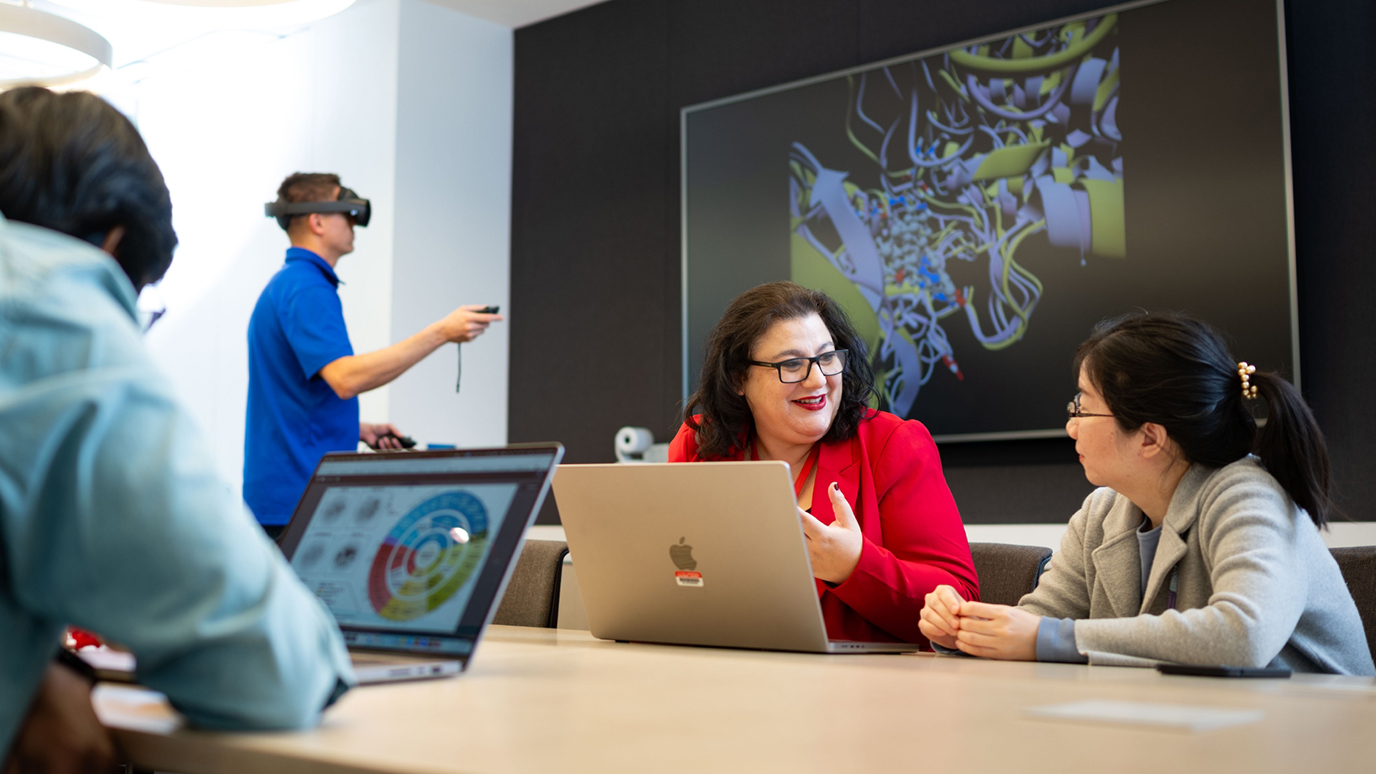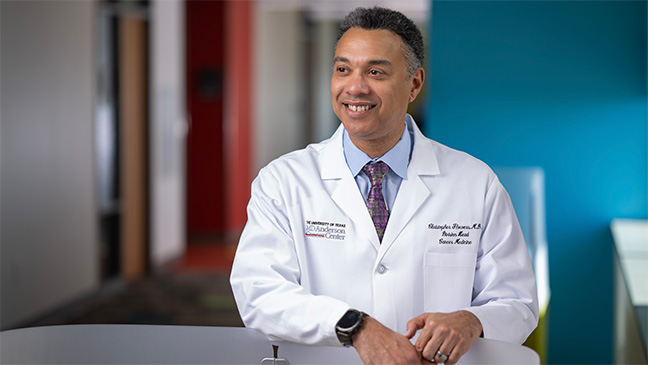- Diseases
- Acoustic Neuroma (16)
- Adrenal Gland Tumor (24)
- Anal Cancer (70)
- Anemia (2)
- Appendix Cancer (18)
- Bile Duct Cancer (26)
- Bladder Cancer (74)
- Brain Metastases (28)
- Brain Tumor (234)
- Breast Cancer (728)
- Breast Implant-Associated Anaplastic Large Cell Lymphoma (2)
- Cancer of Unknown Primary (4)
- Carcinoid Tumor (8)
- Cervical Cancer (164)
- Colon Cancer (168)
- Colorectal Cancer (118)
- Endocrine Tumor (4)
- Esophageal Cancer (44)
- Eye Cancer (36)
- Fallopian Tube Cancer (8)
- Germ Cell Tumor (4)
- Gestational Trophoblastic Disease (2)
- Head and Neck Cancer (14)
- Kidney Cancer (130)
- Leukemia (342)
- Liver Cancer (50)
- Lung Cancer (286)
- Lymphoma (278)
- Mesothelioma (14)
- Metastasis (30)
- Multiple Myeloma (100)
- Myelodysplastic Syndrome (60)
- Myeloproliferative Neoplasm (6)
- Neuroendocrine Tumors (16)
- Oral Cancer (102)
- Ovarian Cancer (178)
- Pancreatic Cancer (162)
- Parathyroid Disease (2)
- Penile Cancer (14)
- Pituitary Tumor (6)
- Prostate Cancer (150)
- Rectal Cancer (58)
- Renal Medullary Carcinoma (6)
- Salivary Gland Cancer (14)
- Sarcoma (238)
- Skin Cancer (302)
- Skull Base Tumors (56)
- Spinal Tumor (12)
- Stomach Cancer (66)
- Testicular Cancer (28)
- Throat Cancer (92)
- Thymoma (6)
- Thyroid Cancer (100)
- Tonsil Cancer (30)
- Uterine Cancer (86)
- Vaginal Cancer (18)
- Vulvar Cancer (22)
- Cancer Topic
- Adolescent and Young Adult Cancer Issues (22)
- Advance Care Planning (12)
- Biostatistics (2)
- Blood Donation (18)
- Bone Health (8)
- COVID-19 (360)
- Cancer Recurrence (120)
- Childhood Cancer Issues (120)
- Clinical Trials (628)
- Complementary Integrative Medicine (22)
- Cytogenetics (2)
- DNA Methylation (4)
- Diagnosis (240)
- Epigenetics (6)
- Fertility (62)
- Follow-up Guidelines (2)
- Health Disparities (14)
- Hereditary Cancer Syndromes (128)
- Immunology (18)
- Li-Fraumeni Syndrome (8)
- Mental Health (122)
- Molecular Diagnostics (8)
- Pain Management (62)
- Palliative Care (8)
- Pathology (10)
- Physical Therapy (18)
- Pregnancy (18)
- Prevention (940)
- Research (390)
- Second Opinion (78)
- Sexuality (16)
- Side Effects (616)
- Sleep Disorders (10)
- Stem Cell Transplantation Cellular Therapy (216)
- Support (408)
- Survivorship (330)
- Symptoms (182)
- Treatment (1794)
Diabetes specialist: Why I love working at MD Anderson
3 minute read | Published March 31, 2023
Medically Reviewed | Last reviewed by an MD Anderson Cancer Center medical professional on March 31, 2023
When I first joined the faculty at MD Anderson in 2012, I didn’t really intend to stay, even though I was one of only two diabetes specialists on staff here, and the need was great for my area of expertise.
My husband is also a physician, and he had just been matched with a fellowship program in California. So, my original plan was to work at MD Anderson for a year and then join him on the West Coast, where we would come up with a final destination for our family.
I ended up liking the job here so much, though, that I really wanted to stay. Fortunately, my husband was able to find a great job in Houston, too, after his fellowship ended. So, here we still are, 11 years later. And I still really love what I do.
The best part of my job: giving patients back some control
The best part of managing diabetes in a place like MD Anderson is that it allows me to give patients back some measure of control over their lives.
Most patients can’t really do anything to resolve their own cancers, other than agreeing to undergo cancer treatment.
But with diabetes, patients can take more ownership of their disease. And they can see almost immediate improvement in their blood sugar levels if they’re willing to make changes to their diet and exercise routines and take prescribed medications.
Helping cancer patients with diabetes manage their blood sugar levels isn’t just good for their morale. Well-controlled sugars also can make the difference between being able to have surgery as soon as they need it, qualifying for a clinical trial or continuing a particular therapy — or not. Diabetes also puts people at higher risk for additional cancers. So, controlling blood sugars in cancer patients is critically important.
How I’ve dealt with ageism
I guess I look a little young for my age, because occasionally, new patients or their family members will assume I’m a nurse or a trainee when I walk in, despite my white lab coat. Sometimes, they’ll say I’m too young to be a doctor.
When that happens, I just smile and explain politely that I’m older than they think and that I’ve already been a physician for this many years. Then I’ll show them my MD Anderson badge, tell them my specialty and explain why I’ve been asked to come see them.
I approach things this way, in part, because I feel like you have to give people the benefit of the doubt. So many people walk into and out of patients’ rooms over the course of a single day that it really can be hard to keep track of who everyone is.
How being multilingual has benefitted me — and my patients
I’ve also noticed how much knowing different languages has benefitted me at MD Anderson. It really helps me connect with my patients.
Languages have always come easily to me, and I love to learn them. But I didn’t speak English fluently when I moved to the United States from Bahrain as an 8-year-old. Still, by the time I got to college, I was able to pursue a double-major in biology and Spanish and earn both degrees in just three years. In addition to English and Spanish, I also speak Hindi and Gujarati, an Indian dialect with roots in Arabic.
Many Latinx patients are surprised to hear me speak Spanish fluently. But I love seeing the relief on their faces when they realize they can comfortably communicate with me about their conditions in their own preferred language. That makes life so much easier — for both of us.
Request an appointment at MD Anderson online or by calling 1-877-632-6789.

It allows me to give patients back some measure of control over their lives.
Sonali Thosani, M.D.
Physician





